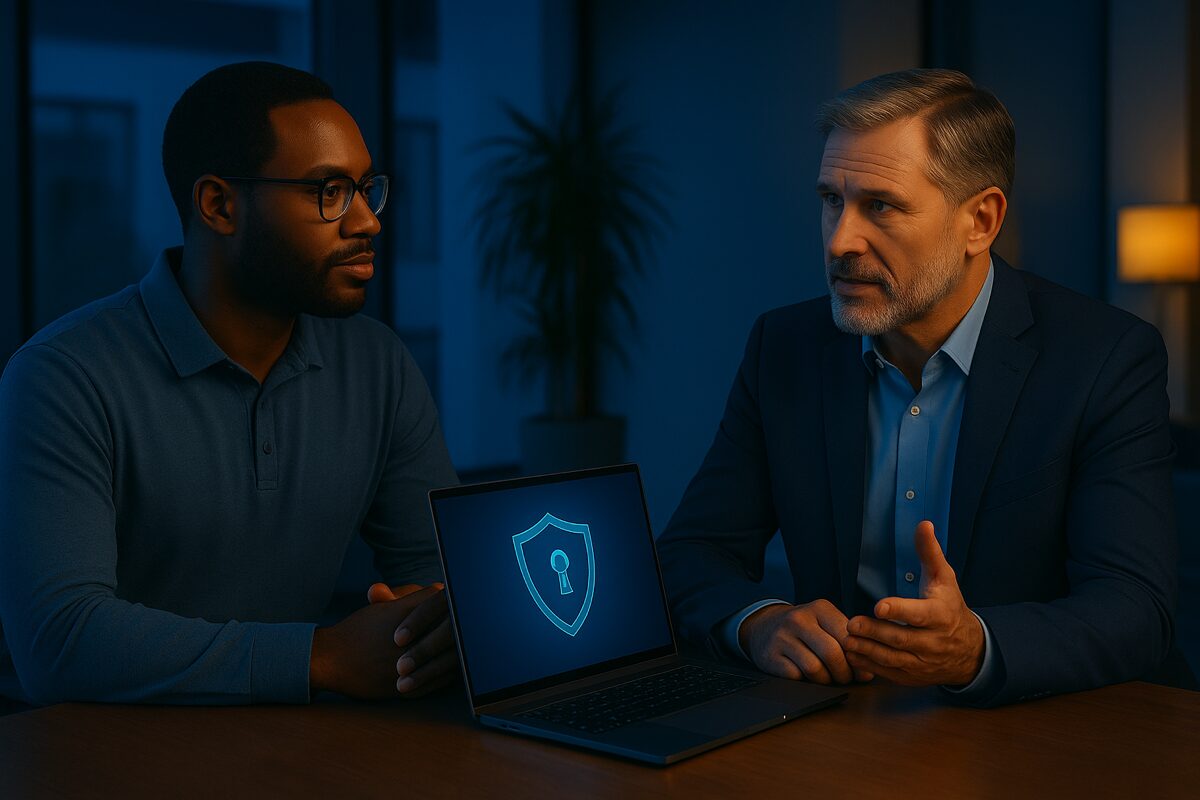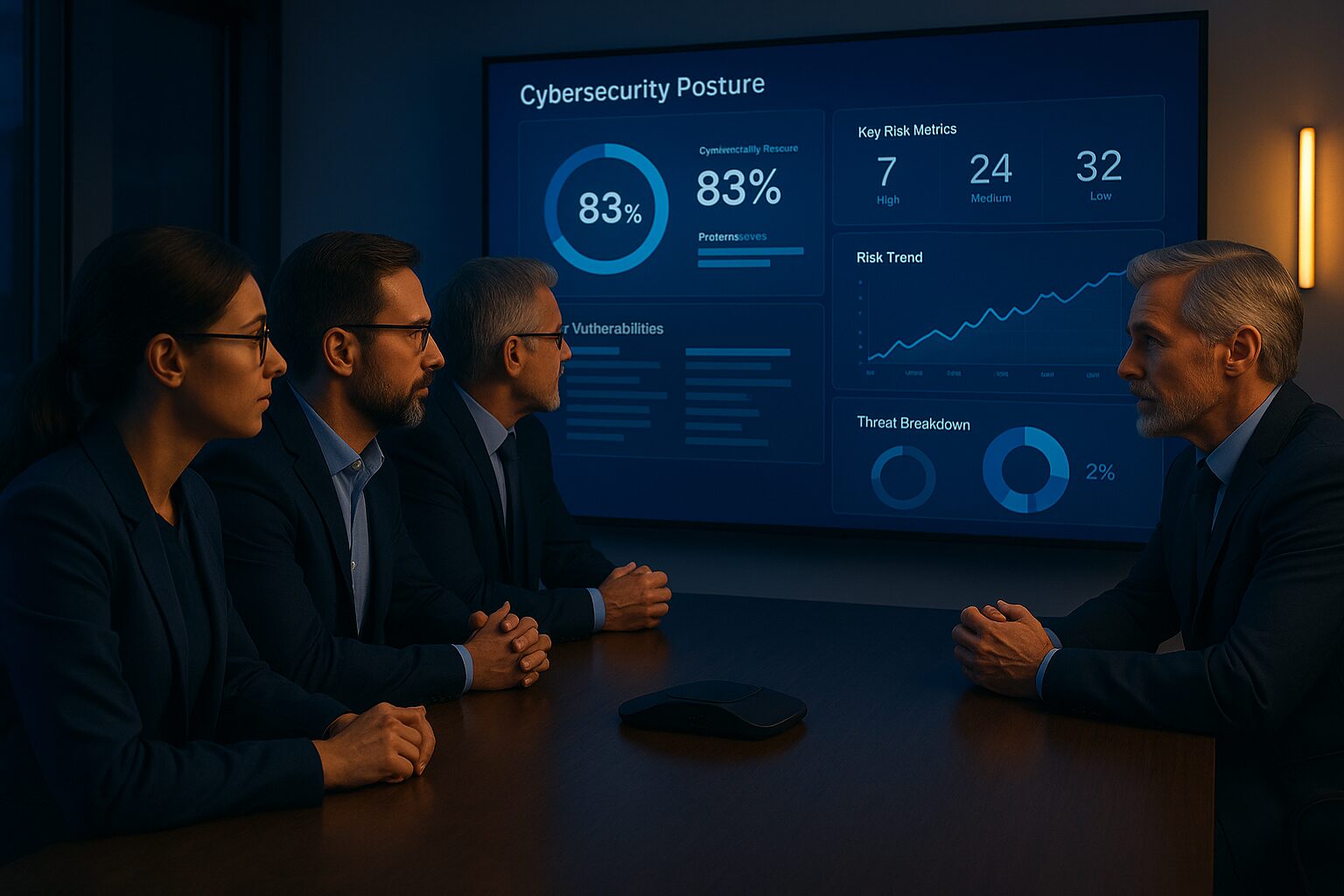Imagine this. An auditor walks into your senior living community, clipboard in hand, ready to assess your compliance with HIPAA, FTC safeguards, and a growing list of other regulatory standards. Do you feel confident that your systems, policies, and teams are ready? Or do you feel the subtle panic of wondering where your last security log report even lives?
In today’s regulatory landscape, being audit-ready is no longer a nice-to-have. It is a non-negotiable part of protecting both your residents’ private information and your community’s reputation. The rise in cyber threats targeting healthcare-adjacent organizations, including senior care, has made it clear: you cannot afford to be caught off guard.
That is why preparing for a security risk audit for senior living communities is so critical. This is more than a checkbox exercise. It is an opportunity to strengthen your infrastructure, eliminate compliance blind spots, and build a culture of safety across your teams. In this guide, we will break down the exact steps to take before an audit happens, so your facility stays protected, confident, and ready.
1. Understand the Scope: What Auditors Are Looking For
Before you prep for a security audit, you need to know what’s on the table. Auditors aren’t just skimming through a checklist. They’re evaluating how seriously your community takes its responsibility to protect resident data—and how well your systems, staff, and safeguards align with regulatory requirements.
Here’s what they’re really looking at:
HIPAA Compliance
Specifically, the HIPAA Security Rule. This requires that you conduct a regular security risk assessment tailored to your facility’s size, complexity, and the systems you use. It’s not a one-size-fits-all template. It’s a reflection of how well your infrastructure, policies, and day-to-day operations reduce risk to patient health information.
Documentation that Holds Up
Policies, procedures, training logs, and risk mitigation plans—auditors will want to see it all. If it’s not written down, it doesn’t count. Make sure your documentation isn’t scattered across folders or buried in emails. Create a central, well-organized audit binder (digital or physical) with your compliance essentials clearly labeled and accessible.
Physical and Technical Safeguards
Think: who has access to what, and how well is that access protected? Do you have badge-only areas? Are your devices encrypted? Can you track who logs in to view resident records? Auditors want to see real controls in place to prevent unauthorized access to ePHI, both physically in your buildings and digitally across your network.
Understanding what auditors want gives you a major advantage. You can’t control when the audit will happen, but you can absolutely control how prepared you are when it does.
2. Conduct a Thorough Security Risk Assessment (SRA)
A strong audit starts with a clear understanding of your risks. That means conducting a full security risk assessment, not just checking boxes. This isn’t just a HIPAA requirement—it’s a smart way to protect your residents, your staff, and your business operations.
Here’s how to do it well:
Start with a Data Inventory
Map out every place your facility touches electronic protected health information (ePHI). That includes resident records, medication tracking systems, billing platforms, staff scheduling tools, and email communications. Look at where this data is stored, how it travels, and who can access it. The goal is to understand the full lifecycle of your data so you can protect it at every stage.
Perform a Risk Analysis
Once you know where ePHI lives, ask the hard questions. What could go wrong? What if a staff laptop is stolen? What if someone clicks a phishing link? What if your network goes down? Your assessment should explore threats to confidentiality (who can see it), integrity (is it accurate), and availability (can people get to it when needed). Look at internal risks like staff error, and external risks like ransomware or natural disasters.
Develop Mitigation Plans
A good SRA doesn’t just point out the risks—it helps you solve them. For every vulnerability, document your plan of action. That might mean strengthening passwords, adding access controls, updating software, or scheduling staff training. And remember, mitigation is not a one-time event. Build a schedule to regularly revisit and update your risk management efforts as your environment changes.
This process doesn’t have to be overwhelming. But it does need to be thoughtful. A well-executed security risk assessment is one of the most powerful tools you have to protect your community and prove compliance when it matters most.
Be Ready, Not Scrambling
3. Review and Update Policies and Procedures
Your policies are only as good as how often you review them. In an audit, outdated or vague documentation can raise red flags fast. What auditors want to see is that your policies are not only in place but that they reflect how your team actually operates.
Here’s where to focus:
Access Controls
Spell out exactly who can access electronic protected health information and why. A caregiver may need resident health records, but your receptionist likely does not. Define access levels by role and keep those permissions updated as staff change positions or leave. Make sure logins are unique to each user, and avoid the common trap of shared credentials.
Incident Response Plan
If a security event happens, what’s your plan? You need more than a vague commitment to “look into it.” Create a step-by-step protocol for how to identify, contain, and report a breach. Include timelines for notifying affected parties and the Department of Health and Human Services if required. Practice your plan like a fire drill. It should feel familiar to your team, not theoretical.
Policy Reviews and Updates
Set a schedule to revisit your policies at least annually—or more often if regulations shift or your systems change. Treat policy maintenance like any other operational function. Assign owners, document changes, and train staff accordingly. A binder on a shelf won’t cut it. Your procedures need to live in the day-to-day actions of your team.
Auditors aren’t just looking for paperwork. They are looking for alignment between what’s written down and what’s actually happening in your facility. Clear, updated policies show that your organization takes privacy, safety, and accountability seriously.
Audit-Proof Your Policies
4. Train Staff on Security and Privacy Practices
Even the strongest security policies fall apart if your team doesn’t know them—or worse, forgets to follow them. Most breaches don’t start with hackers. They start with humans clicking the wrong link or using weak passwords. That’s why regular, relevant training isn’t a nice-to-have. It’s essential.
Education Programs
Start with onboarding, but don’t stop there. Build a cadence of ongoing training that goes beyond HIPAA checkboxes. Walk staff through what secure data handling looks like in the context of their actual roles. Housekeeping might need reminders about workstation access. Caregivers might need tips on password hygiene. Tailor the content so it sticks.
Awareness Campaigns
Make security a living conversation, not an annual training day. Use posters, emails, staff huddles—whatever gets attention. Highlight real-world scenarios like phishing emails or lost devices. A simple internal campaign can go a long way in reinforcing the idea that everyone, not just IT, plays a role in protecting data.
Testing and Reinforcement
Knowledge fades without practice. Use short quizzes, spot checks, or simulated phishing tests to gauge how well your team is retaining what they’ve learned. It’s not about catching people off guard. It’s about creating a feedback loop that helps everyone get better. If gaps show up, treat them as opportunities, not failures.
Remember, auditors will ask how you’re training your team. But more importantly, your residents trust your staff with their personal information every single day. Investing in education isn’t just about compliance—it’s about upholding that trust.
5. Engage a Trusted Partner for a Pre-Audit Assessment
Sometimes, what you really need is a second set of eyes—especially when those eyes belong to experts who live and breathe compliance. Partnering with a team like Meriplex can make the difference between scrambling to pass an audit and walking into it with quiet confidence.
A pre-audit assessment gives you an honest, thorough look at your current security posture. Our team reviews your infrastructure, evaluates your documentation, tests your safeguards, and surfaces the gaps that might otherwise go unnoticed. It’s not about finding fault. It’s about uncovering the opportunities to strengthen your defenses before someone else points them out.
What you get isn’t a generic checklist or recycled advice. You get recommendations tailored to your facility, your residents, and the unique risks you face in the senior living space. That might mean refining your access controls, tightening up policies, or improving how your team responds to potential incidents. Whatever it is, we’ll make sure it’s practical, relevant, and built to help you meet real-world compliance demands.
Most importantly, working with the right partner brings peace of mind. Instead of bracing for what an auditor might find, you’ll feel prepared, informed, and ready to guide them through your process with clarity. Because when it comes to audits, confidence is everything—and confidence comes from knowing you’ve done the work ahead of time.
Protect Your Community’s Trust
Conclusion: Proactive Preparation Is Key to Audit Success
Preparing for a security audit in your senior living community is a multifaceted endeavor that requires diligence, regular assessments, and a commitment to continuous improvement. By understanding audit requirements, conducting thorough risk assessments, updating policies, training staff, and seeking expert guidance, you can navigate the audit process with confidence.



